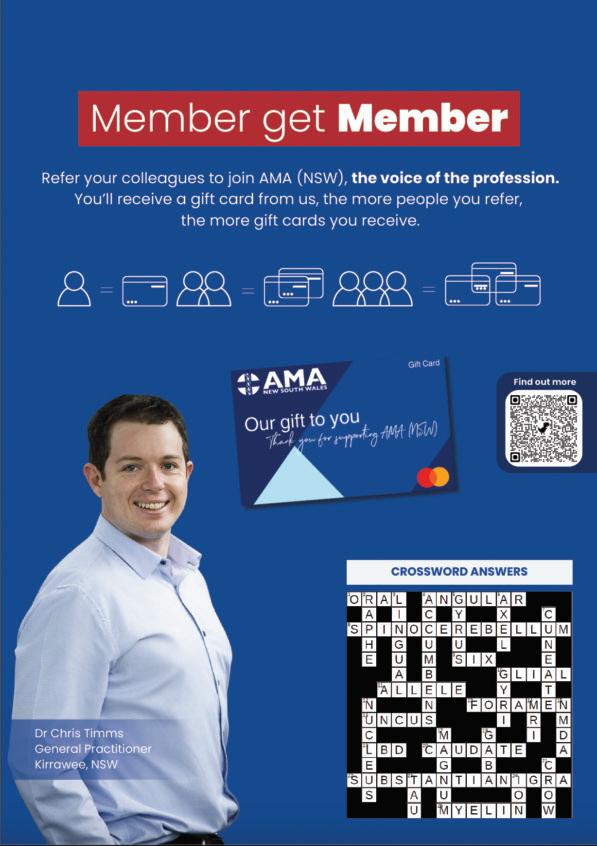ON THE BRINK
What’s next for private hospitals Going

TRUST TO TURMOIL
Why vaccine confidence is crumbling





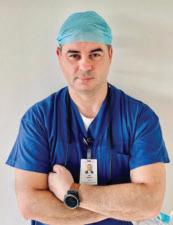


What’s next for private hospitals Going

Why vaccine confidence is crumbling







Welcome to our autumn edition of NSW Doctor.
It has been a challenging few months in health, but one certainty remains: doctors are missioncritical to the health system.
We know this, and patients and their families certainly know this.
In this edition, we highlight the value doctors bring to the public system and the positive impact they have on so many lives through our cover feature, beautifully written by Stephanie Osfield and photographed by Hayden Brotchie.
We also know that, despite the tumultuous start to 2025 in health, the AMA (NSW) team continues its long tradition of diligently advocating for doctors and providing expert and trusted advice.
That specialist advice and support continues with this edition, where our CEO Fiona Davies and Director of Workplace Relations Dominique Egan have penned a guide on the arbitration process in NSW as we modernise working conditions for visiting medical officers in the Industrial Relations Commission this year.
Anastasia Livanova and Joanne Choo from our Workplace Relations team examine the new wage theft

The Australian Medical Association (NSW) Limited ACN 000 001 614
STREET ADDRESS
69 Christie Street ST LEONARDS NSW 2065
MAILING ADDRESS PO Box 121, ST LEONARDS NSW 1590 Telephone (02) 9439 8822
Outside Sydney Telephone 1800 813 423
Email magazine@amansw.com.au members@amansw.com.au www.amansw.com.au
The NSW Doctor is the quarterly publication of the Australian Medical Association (NSW) Limited.
laws and offer advice on how your practice can remain compliant.
Alarmingly, vaccination rates among children have declined for the third consecutive year in Australia across all three standard age assessment milestones, a dangerous trend fuelled by politics and social media.
Policy advisor Isabella Angeli delves into the issue and what can be done to turn the statistics around.
Isabella also examines the viability of our private hospitals, a hot topic given the recent issues at Northern Beaches Hospital in Sydney.
We catch up with our interns on how they are faring in their first year on the wards, and Communications Officer Amanda Davey meets Dr Igor Banzic, a vascular surgeon who took over a thriving practice in northern Sydney and is now striving to build a legacy for those to come.
Dr Banzic says the support provided by AMA (NSW), a key benefit to our members, was instrumental in establishing his practice.
I hope you enjoy this edition.
magazine@amansw.com.au
www.facebook.com/amansw
Views expressed by contributors to The NSW Doctor and advertisements appearing in The NSW Doctor are not necessarily endorsed by the Australian Medical Association (NSW) Limited. No responsibility is accepted by the Australian Medical Association (NSW) Limited, the editors or the printers for the accuracy of the information contained in the text and advertisements in The NSW Doctor. The acceptance of advertising in AMA (NSW) publications, digital, or social channels or sponsorship of AMA (NSW) events does not in any way indicate or imply endorsement by the AMA.
AMA (NSW) BOARD
Dr Kathryn Austin, President
Dr Fred Betros, Vice President
Dr Michael Bonning
Dr Costa Boyages
Dr Brian Fernandes
Dr Amandeep Hansra
Dr Jacqueline Ho
Dr Theresa Ly
Dr David Malouf
SECRETARIAT
Chief Executive Officer, Fiona Davies Director, Workplace Relations Dominique Egan Director, Membership Engagement and Commercial Partnerships Gary White
Editor Kate Benson kate.benson@amansw.com.au
Cover photography Hayden Brotchie
Design
Design Bees
Advertising enquiries Ally Chandler ally.chandler@amansw.com.au
Reflecting on the pressures facing doctors and why it’s time we properly recognise and value their work.
It’s been another incredibly busy few months for AMA (NSW) and an unsettling period in the health system
April’s industrial action by junior medical officers and staff specialists was a clear example of the pressures doctors face in public hospitals in NSW.
As a staff specialist myself, I understand these frustrations and challenges. We are forced to do more with less every day to meet the growing needs of our patients.
At AMA (NSW), we continue working behind the scenes to effect positive change for doctors through arbitration, advocacy, influence and lobbying.
This quiet, tireless work often goes unrecognised, but it is the very essence of long-term, meaningful improvements in conditions for doctors working in our public and private systems. It will greatly contribute to ensuring that we have a sustainable health system for many decades to come.
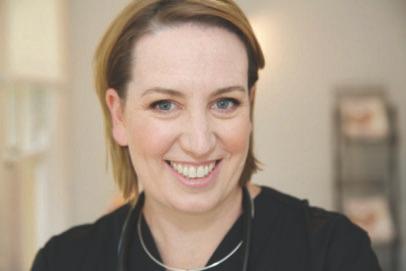
have faced huge challenges recently with workforce pressures and the closure of private hospital units.
Expertise and integrity are the backbone of our work at AMA (NSW), and I thank you for your ongoing support.
We are continuing our focus on rural and regional health. We are working closely with MP Dr Joe McGirr to push for better access to health services for those living behind the Great Divide and an increase in workforce numbers. This includes maternity services, which
We also recently held a masterclass for specialists embarking on setting up private practice, where vicepresident Fred Betros and I were joined by gastroenterologist Akayala Mahendran to share our expertise. And AMA (NSW)’s Workplace Relations team ran a dynamic networking event for practice managers.
President@amansw.com.au
www.linkedin.com/in/ kathryn-austin-a2920073/
www.facebook.com/ amansw
amansw.com.au
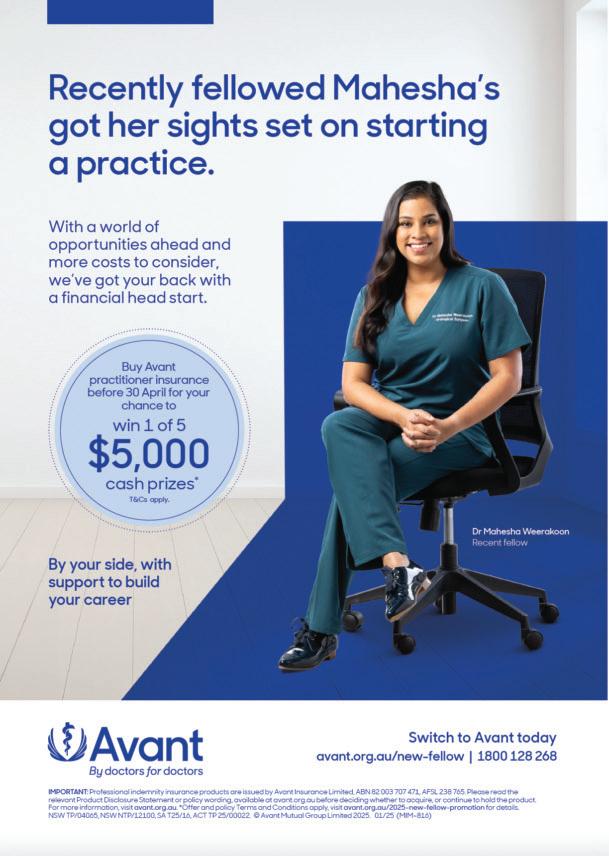
Irecently had the privilege of speaking at the inaugural regional health session
at the Australian Society of Otolaryngology Head and Neck Surgery conference in Sydney.
My session was the vision of ear, nose and throat surgeons wanting to showcase the value of regional practice in what is otherwise a mostly metropolitan speciality.
I felt honoured to be joined by pioneer general surgeons supporting local ENT trainees, Professor Kelvin Kong, a champion of indigenous and inclusiveness, and two regional ENT surgeons who are also farmers. The session was inspiring. While there was much talk of doctors, the main focus was on patients—their efforts to access care and the extraordinary personal and financial cost that can be imposed on them.
The session also highlighted the pressures doctors face when overwhelmed with demand but know how important access to care is to their patients. Every patient needing a procedure or attending an appointment has taken time off work or arranged for family or friends to help out. For those patients, their care was a significant event.
I had a similar conversation with a group of regional obstetricians soon after my presentation. They spoke of the pressure they feel to ensure they don't cancel clinics,
knowing the lengths patients go to get to their care.
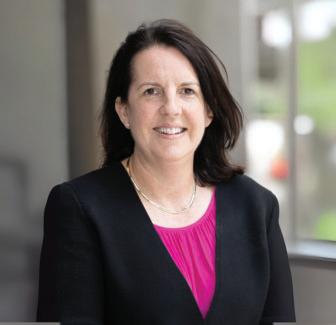
As both the CEO of AMA (NSW) and the spouse of a neurosurgeon, I know only too well the sacrifices doctors and their families make for their patients. I confess that it is easy to be resentful of the impact, and it is tough on children. I also know it is harder on my husband who has missed birthdays and graduations.
But, most importantly, it is hardest on patients who might be having the worst day of their lives.
This does not mean doctors should not try to find some balance in their lives.
But the lesson—and one we are taking to heart in our advocacy and stories at AMA (NSW )—is to always keep the patients at the centre of our message. Accessing healthcare is hard enough without patients feeling they need to take care of their doctors.
By telling the stories of patients and the deep value they find from their doctors, we showcase the irreplaceable work of doctors and their impact on so many lives.
fiona.davies@amansw.com.au www.facebook.com/amansw
https://au.linkedin.com/company /ama-nsw
amansw.com.au I 7

Behind every act of compassionate, person-centred care is a doctor’s deep commitment. We spoke to four who go the extra mile to make a difference.
By Stephanie Osfield By Stephanie Osfield
Aged care worker, Nicole Cathcart (pictured, front cover) travels 45 minutes
to see general practitioner Anju Aggarwal
“It’s worth it,” the 49-year-old says.
“I trust her completely with the healthcare of my three children, and she has always been an incredible doctor and has provided great support for me.
“I know some patients travel all the way from the Southern Highlands for their appointments because she is such a wonderful GP.”
Over a 30-year medical career, Dr Aggarwal has spent 25 years in general practice, treating everyone from newborns to centenarians.
She practises in Bankstown and Penrith, caring for many people from culturally and linguistically diverse backgrounds and values her patients above all else.
“Their love and trust fulfill and energise me,” says Dr Aggarwal, who often treats multiple generations within families and shares in their joys and losses.
After graduating from medical school in India, Dr Aggarwal migrated to Australia in 1991.
She emphasises the importance of general practice, calling it the foundation of holistic healthcare.
“I describe its strengths as the ‘5
Dr Anju Aggarwal
cs’ continuous, comprehensive, coordinated, cost-effective, and convenient care.”
Before general practice, she worked across hospitals in Adelaide, Launceston and Sydney, gaining experience in aged care, psychiatry, paediatrics, antenatal care, surgery, and emergency medicine.
“As a doctor, you are a medical detective, uncovering hidden health clues using communication, compassion, and empathy.”
She also actively contributes to professional organisations, including AMA (NSW) and federal council, Mental Health Advisory Committee, and RACGP faculty council NSW and ACT.
“Doctors are advocates in healthcare and must be represented in decision-making processes to drive improvements,” she points out.
“While offering my perspective, I also enjoy learning from peers.”
Passionate about community health, she gives volunteer presentations on cancer awareness, osteoporosis, adolescent health, child and maternal health, and to "GPs in Schools" programs.
She also collaborates with the NSW Multicultural media conference, NSW Multicultural Health Communication Services, and Pink Sari Inc.
Dodging kangaroos at dawn and dusk, flying in small planes to see patients, and
spending time away from family are all part of a typical working week for clinical haematologist Dr Tom Gleeson, who drives long distances to consult in some of the state's most rural and remote blood cancer clinics.
Though he enjoyed studying Latin and Greek while completing a Bachelor of Arts at the University of Sydney, Dr Gleeson’s entry into medicine came about after spending time with his great-uncle, Dr Bob McInerney, a World War II military surgeon turned eminent obstetrician and gynaecologist.
“Hearing his tales of a meaningful life of service really inspired me to pursue a life in medicine.”
Dr Gleeson completed a four-year graduate medical program at the Australian National University, followed by 11 years of medical training, undertaking placements in rural and metro NSW, and Canberra to reach his current level of expertise.
“The registrar years demanded a lot from my family, and I don’t think many people outside medicine appreciate how difficult it was to move so often,” says Dr Gleeson. “Our eldest boy had lived in five towns by age five.”
Cut to the present Dr Gleeson now covers many thousands of kilometres per year, by road and air, from his base at the Western Cancer Centre Dubbo.
Over the past two years, he has doubled the number of outreach clinics to Mudgee (where his ancestors settled in the 1850s) and established the state’s first haematology outreach clinics to
Coonabarabran, Walgett, Bourke and Cobar.
“I typically visit three outreach towns per month and frequently use telehealth consultations between visits,” says Dr Gleeson.
“This allows patients a choice of a face-to-face review in Dubbo, a telehealth consultation from their home or local hospital, or importantly, the opportunity for a face-to-face consultation in one of the outreach clinics.”
But with the rise of Dr Google, Chat GPT and Instagram influencers, Dr Gleeson believes we may have forgotten the value of specialist medical doctors, particularly in rural and remote parts of NSW, where he says, “their numbers are relatively thin on the ground”.
“Although working rurally can sometimes be associated with a sense of professional isolation, my energy is often renewed by a feeling of great satisfaction in caring
for the poor and the sick, the vulnerable and the forgotten,” he adds.
The value of his work as a country doctor is evident in the satisfaction of his patients, who receive their care closer to home.
“My patients often express their gratitude verbally and sometimes with thoughtful gifts such as Christmas cake from Lightning Ridge, fresh figs from Narromine and Riesling from Mudgee,” he says.
“On a recent circuit of western NSW, which took in Coonamble, Walgett, Bourke and Cobar, I enjoyed dinner on the way back in Nyngan with local clinicians and community members. One of my 83-year-old patients came by the pub that evening and shouted me a cold beer. She told me it was well deserved. Those small acts of kindness are very touching and reflect the high regard the rural doctor holds.”
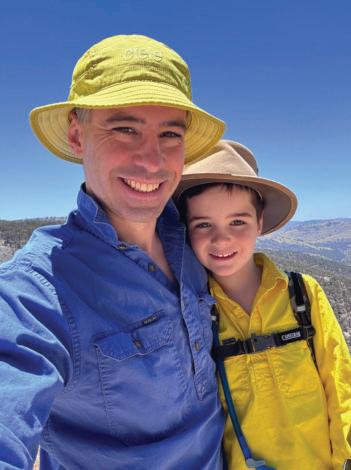
In May 2009, Dr Dina Mahmood arrived in Australia on a humanitarian visa, travelling
from Jordan, where she had spent four years as an asylum seeker after being displaced from Iraq due to the aftermath of war.
“Coming from three generations of doctors, medicine was a family legacy, so I had already spent 10 years training as a doctor and working in obstetrics and gynaecology,” she says.
Initially, Dr Mahmood, now a child and adolescent psychiatrist and clinical director of mental health at Westmead Children’s Hospital, settled in Rockhampton with her husband, who is also a doctor.
To verify her qualifications and meet the requirements to practise in Australia, she sat for numerous medical exams, passed language proficiency testing, and worked as a junior medical officer under supervision for 12 months. She then secured a position as a junior medical officer at Rockhampton Base Hospital in 2010 but felt increasingly drawn to mental health.
“My life experiences led me to apply the lens of psychosocial care to all my medical work.
“This informed my decision to retrain in psychiatry, which involved another five years of full-time study. Learning more about mental illness in young people and the benefits of early recognition and intervention led me to specialise in child psychiatry.”
Climate change, the cost of living and rental crisis, social media

impacts and job precarity are just some of the stressors Dr Mahmood sees contributing to a rise in anxiety, depression and other mental health conditions in young people.

“As I support them and we explore treatment options, I explain to families and young people that genetics and biological factors may also contribute to mental ill health.”
Dr Mahmood hopes that future reforms will help increase recruitment and retention of psychiatrists and reduce burnout.
“Allied and peer workers have important roles to play, but the substantial training, experience and value of psychiatrists is irreplaceable,” she says.
Despite her 10-to-14-hour days, Dr Mahmood volunteers for international organisations and travels to Iraq to support the training of a workforce in child and adolescent psychiatry.
Dr Felicity Park, an obstetrician and maternal-fetal medicine specialist at John Hunter Hospital in Newcastle, is passionate about the health of pregnant women and babies.
This has driven her 10-year mission to invert the pyramid of antenatal care and focus more maternity resources on early pregnancy assessment.
That vision has been realised through a game-changing model of care that she conceived and developed, called the Initial Maternity Assessment and Planning service (IMAP).
The initiative required approval from NSW Health to conduct a year-long interventional trial for proof of concept and acceptability. It was so successful that IMAP was rolled out and now provides an individualised, comprehensive, holistic, multidisciplinary screening assessment option for every
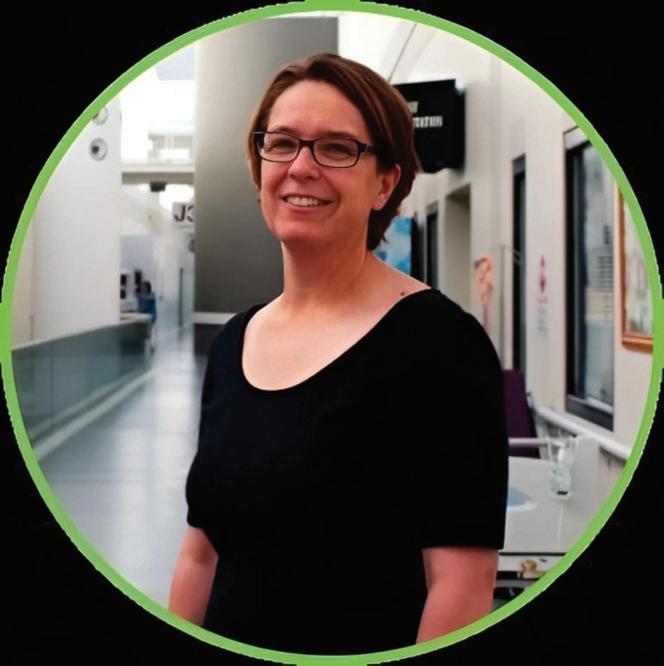
Dr Felicity Park
pregnant person booking into John Hunter Hospital.
“IMAP has also been rolled out in Moree, which has a 70 per cent indigenous population.
“It identifies pregnancies at increased risk of developing adverse outcomes, to provide evidencebased preventative interventions sooner. For example, by giving aspirin at 12 weeks to pregnant people at high risk of pre-term preeclampsia (before 37 weeks), their risk can be reduced by 60 per cent.”
A trip to Southeast Asia in her 20s inspired Dr Park to pursue a medical degree at the University of Sydney and offer healthcare to people with limited access.
Her internship was in Alice Springs.
“I grew up in the small town of Khancoban in the Snowy Mountains and really enjoyed that familiar sense of community when practising medicine on country in the Northern Territory,” Dr Park recalls.
Before this, she had spent four years studying to become an occupational
therapist and three years working in OT.
Her career diverged again when she relocated to the UK and Scotland and completed three years of basic obstetrics and gynaecology training followed by eight more years of study back in Australia. This included maternalfetal medicine specialist training at Westmead and John Hunter Hospitals and a PhD at the University of Sydney, focused on predicting and preventing preterm pre-eclampsia.
In her high-pressure medical specialty, it’s not uncommon for her to work marathon 16-hour shifts, followed by two or three overnight trips to the delivery ward.
“I love to body surf, and I volunteer on beach patrol and as a junior nippers co-ordinator for the Newcastle Surf Lifesaving Club,” Dr Park says.
She also flies to Suva, Fiji, three or four times a year, where she volunteers to mentor and teach obstetricians.
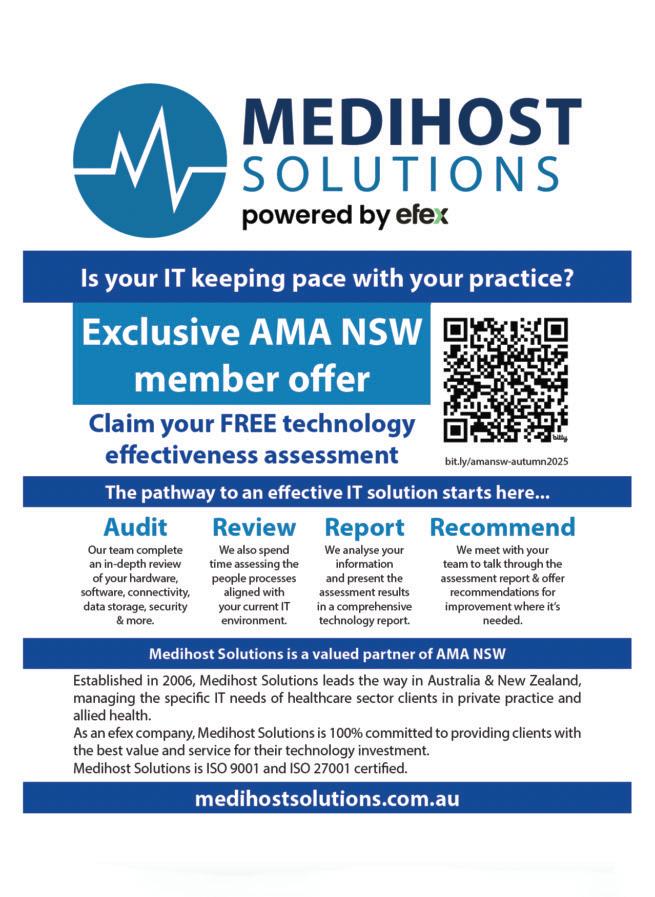

This case underscores the importance of a fair disciplinary process and serves as a timely reminder for employers to review their policies and employment contracts to prevent costly legal proceedings.
By Anastasia Livanova
In the case of Elisha v Vision Australia Ltd [2024] HCA 50, the High Court found that an employer was liable for an employee’s psychiatric injury, which arose from the employer's flawed disciplinary process and
handling of the employee's dismissal. The High Court awarded the employee more than $1.44 million in damages.
The decision highlights the need to ensure that employment contracts do not unintentionally include policies and, when they do, that these policies are properly adhered to.
In 2006, Adam Elisha was employed by Vision Australia as an adaptive technology consultant. As part of his role, Mr Elisha was required to travel across the country.
In March 2015, during a workrelated hotel stay, Mr Elisha was accused by the hotel manager of engaging in aggressive behaviour towards hotel staff.
In May 2015, Vision Australia informed Mr Elisha that he was being stood down from his role, citing breaches of company policy and allegations of serious misconduct relating to the hotel incident. The stand-down letter stated that the disciplinary
meeting would be conducted in accordance with Vision Australia’s Enterprise Agreement and disciplinary procedure.
During the disciplinary meeting, Mr Elisha denied any allegations of misconduct.
Vision Australia terminated Mr Elisha’s employment for serious misconduct, as it preferred the hotel manager’s evidence and found that Mr Elisha had displayed a pattern of aggression during his employment.
Several significant issues arose from Vision Australia’s handling of the disciplinary process. Mr Elisha was not informed of prior behaviour or allegations that influenced Vision Australia’s decision to terminate his employment.
Furthermore, management relied on undisclosed allegations of a pattern of aggression when assessing his credibility, and Mr Elisha was not given a chance to respond to all relevant claims. The termination was partly based on information that was not put to him, resulting in a breach of the company’s own disciplinary policies.
Following the termination, Mr Elisha was diagnosed with major depressive disorder and an adjustment disorder with depressive mood, which left him unable to work for the foreseeable future.
In 2020, Mr Elisha commenced proceedings in the Supreme Court of Victoria against Vision Australia, alleging the company had breached his employment contract and was negligent in the disciplinary process and that this had caused him significant psychiatric injury.
The Supreme Court ruled in Mr Elisha’s favour, concluding that the disciplinary process was unfair,

unreasonable and in breach of the disciplinary policies which were incorporated into the employment contract. The primary judge also found that Vision Australia should have reasonably foreseen a serious possibility that Mr Elisha may experience distress or psychiatric injury arising from the breach of the employment contract.
Accordingly, the Supreme Court of Victoria awarded Mr Elisha over $1.44 million in damages, including compensation for psychiatric injuries.
Vision Australia appealed the decision, and the Court of Appeal overturned the Supreme Court’s ruling. The Court of Appeal held that damages for psychiatric injury were generally not recoverable in breach of contract claims and concluded that Mr Elisha’s injury was too remote from the breach of contract by Vision Australia.
Mr Elisha’s grounds for appeal to the High Court included that the Court of Appeal had erred in concluding that damages for psychiatric injury were not recoverable for breach of contract.
The High Court found that Mr Elisha was indeed entitled to compensation for the psychiatric injury caused by Vision Australia’s breach of contract, specifically in relation to the manner of his dismissal.
The High Court also held that while the precise nature of Mr Elisha’s psychiatric injury may not have been foreseen at the time the employment contract was

entered, it was reasonable to expect that he would experience significant distress and emotional harm by the manner in which Vision Australia breached the employment contract and by the consequences of the breach including dismissal for alleged misconduct from the employment that he had held for nearly a decade.
The High Court reinstated the order made by the Supreme Court of Victoria to award Mr Elisha damages of more than $1.4 million for psychiatric injury.
This decision overturned a centuryold precedent established in the case of Addis v Gramophone Company Ltd [1909] AC 488, which held that employees could not be compensated for emotional distress resulting from how an employee was dismissed unless explicitly stated in the employment contract.
The High Court’s decision reflects the evolving nature of employment relationships and recognises the significant emotional impact that a flawed disciplinary process and dismissal can have on employees.
The High Court acknowledged that employment is a central aspect of an individual’s life, providing not only financial support but also identity, occupation, and selfesteem. As such, an unfair process of termination for alleged misconduct can have profound effects on an employee’s livelihood, identity and self-esteem.
This case represents a shift in understanding the impact a breach of employment contracts and policies could have on employees beyond financial loss. It reinforces the importance of a fair disciplinary process and offers a timely reminder for employers to review their policies and employment contracts to avoid costly legal proceedings.

Following the High Court’s decision, employers should:
Pay attention to the drafting of employment contracts. Where an employment contract contains references to an employer’s policies, they will be considered part of the agreement. To minimise the risk of a policy becoming a contractual term, ensure the employment contracts are carefully drafted and expressly state that policies do not form a part of the contract. Do not inadvertently incorporate policies that would impose binding obligations on an employer.
Review your current disciplinary policies on a regular basis. Too often, policies can become overlooked once they are in place. It’s essential that they remain fit for purpose and don’t impose obligations beyond what was intended.
Ensure that staff involved in conducting disciplinary processes are aware of their obligations under the policies and that the disciplinary process is conducted fairly and transparently.
Be mindful of the psychological impact their decisions may have on employees. A poorly handled disciplinary process or dismissal can cause significant emotional distress, leading to potential claims for damages.
If you need assistance with a workplace investigation, disciplinary process or would like us to review your staff employment contracts,
please contact the AMA (NSW) Workplace Relations team for tailored advice. You can contact our team on (02) 9439 8822 or via email workplace@amansw.com.au

Anastasia Livanova is a workplace relations advisor at AMA (NSW) and an experienced employment lawyer.

Intentionally underpaying employees is now a criminal offence. Here’s how to stay compliant
By Joanne Choo
Are you a private practice owner?
If you’re a private practice owner, it’s important to understand that intentionally underpaying your employees is now a criminal offence, also known as wage theft.
The Fair Work Ombudsman’s (FWO) move to impose criminal penalties, effective 1 January 2025, for employers who intentionally engage in conduct resulting in underpayment demonstrates a no-tolerance stance on underpayments.
Criminal penalties are as follows:
A company can face a maximum penalty of $7.825 million or three times the underpayment (whichever is greater);
An individual can face a maximum of 10 years in prison and/or a maximum penalty of $1.565 million or three times the underpayment (whichever is greater).
Employers can only be prosecuted for offences that occur on or after 1 January 2025. An exception to this is if the offence is part of a course of conduct that began before the provisions came into effect.
Intentional underpayments refer to payments owed to an employee under the Fair Work Act 2009 (Cth) (FWA), including modern awards such as the Health Professionals and Support Services Award 2020 (HPSSA) or the Nurses Award 2020,
16 I THE NSW DOCTOR I AUTUMN 2025

enterprise agreements, a workplace determination, or a Fair Work Commission (FWC) order. This includes wages, paid leave entitlements, and superannuation or salary sacrifice arrangements on behalf of the employee.
These provisions will apply to most private medical practices. There are some limited exclusions for certain entitlements for staff employed by a sole trader or partnership (which may be structures used by practices, although more commonly, a corporate entity is used), other unincorporated entities, or a nontrading corporation.
Under Section 327A of the FWA, an intentional underpayment occurs when an employer: is required to pay an amount to, on behalf of, or for the benefit of an employee under the FWA, an industrial instrument, or a FWC order; and engages in conduct (whether by act or omission) that
intentionally fails to pay wages or provide benefits owed to an employee.
Intentional underpayment also occurs when the conduct results in a failure to pay the required amount in full by the due date for payment.
What exactly is intentional conduct that results in an underpayment?
For an underpayment to be intentional, you must have engaged in conduct that results in the underpayment and have intended that your conduct would result in a failure to pay the required amount in full on or before the due date.
In other words, honest mistakes do not count. An example of an honest mistake or an unintentional payment would be a miscalculation of penalty rates for a receptionist under the HPSSA due to misinterpreting a clause. An example of an intentional underpayment is when a practice seeks advice from an accountant
or other professional advisor regarding penalty rates, identifies an underpayment, but fails to take steps to rectify it.
Under the new legislation, safe havens may provide employers with protection from being referred to the Director of Public Prosecution or the Australian Federal Police for criminal prosecution if it can be demonstrated that the underpayment was not intentional. There are two types of safe havens available.
1. Voluntary Small Business Wage Compliance Code.
The code is only available to small business employers, that is practices with less than 15 employees.
If you are a small practice and can demonstrate compliance with the code, it can help you avoid criminal prosecution in relation to an underpayment. The FWO will assess criteria including but not limited to whether the employer made reasonable efforts to stay up to date with changes to their obligations (such as award minimum increases), sought advice on payment of wages from a reliable source such as AMA (NSW) or FWO, and taken steps to fix any underpayments.
The FWO will assess the overall picture and the business’s specific circumstances to determine whether the code has been met.
2. Cooperation Agreement
The Cooperation Agreement is available to both small and non-small business employers.
The Cooperation Agreement is a written agreement between the FWO and an employer, business, or person who has self-reported a possible offense under the new wage theft legislation. If your practice is a small business, consider whether you have demonstrated compliance with the code first before taking this route.
The FWO will consider a range of factors before deciding to enter into this agreement, including, but not limited to, your level of cooperation, the nature and gravity of the conduct, and whether you have made a voluntary, frank, and complete disclosure of the conduct.
If you’ve identified an underpayment for your employee, act promptly and take steps to pay the amount owed, as well as take positive steps to prevent it from happening again.

This involves a thorough review of records and payments made, accurately calculating the amount owed, discussing the issue with the employee, repaying the owed amount as soon as possible and implementing preventative measures moving forward. Be sure to document each step.
Joanne Choo is a senior workplace relations advisor at AMA (NSW).
The AMA (NSW) Workplace Relations team provides compliant contract templates and pay guides for practice staff and can assist with the interpretation of the Award/NES and the resolution of any potential underpayments. Please email workplace@amansw.com.au or call (02) 9439 8822.


By Fiona Davies and Dominique Egan
This year, AMA (NSW) will proceed with arbitration to modernise terms and conditions for visiting medical officers. The last major changes to visiting medical officer determinations were made in 2007.
The last major changes to the staff specialist award occurred in 2006, and the last major changes to visiting medical officer determinations were made in 2007. It has been much longer since the doctor-in-training award was reviewed.
Since the election of the Minns Government in 2023 and the lifting of the former state government’s wages policy, which limited the scope for award reform, there has been a significant focus on industrial arrangements and awards in NSW.
In NSW public hospitals, employed medical staff are covered by awards.
What is the industrial relations system?
The industrial relations system regulates relations between employers and workers including remuneration and terms and conditions of employment. Under the legislation in NSW, unions are
allocated responsibilities for negotiating the awards on behalf of categories of employees.
The Health Services Union and ASMOF NSW are the registered industrial organisations for doctorsin-training. AMA (NSW) advocated for a change to the law in 2013 to
allow ASMOF to represent doctorsin-training, in addition to the Health Services Union.

ASMOF NSW is also the registered industrial organisation representing staff specialists. In NSW, you cannot be compelled to be a member of a union, and the applicable award applies to your employment whether you are a union member or not.
AMA (NSW) is the registered industrial organisation for VMOs.
What is the process for award reform?
Under the Industrial Relations Act in NSW, an application for an award or an amended award must be made to the Industrial Relations Commission.
The parties may present an
agreed-upon position to the Industrial Relations Commission or each file a claim (known as a log of claims). Often, a party’s log of claims is presented as an amended award or new award.
What is the role of the Industrial Relations Commission in award reform?
The Industrial Relations Commission’s principal role is to resolve industrial disputes, unfair dismissal claims, fix wage rates and set terms and conditions of employment by making industrial awards and approving enterprise agreements.
The Industrial Relations Commission will first and foremost encourage the parties to reach agreement, where possible. There is a conciliation process conducted by a member of the Industrial Relations Commission, but in addition to this parties will have engaged in negotiations (including, where applicable, a mutual gains bargaining process) before and during arbitration.
An arbitration involves a hearing before the Industrial Relations Commission, during which the parties will have the opportunity to present evidence and arguments they rely on in support of, or in opposition to the claim or claims made.
The industrial relations system is based on conciliation and arbitration, that is seeking to reach agreement by consensus and then where necessary, both sides putting forward their evidence and the court making the determination.


Why do matters proceed to arbitration, and what is the Industrial Relations Commission’s role?
An award or amendments to an award must be approved by the Industrial Relations Commission. This is the case whether there is disagreement or agreement between the parties on the terms of the award.
The Industrial Relations Commission must consider the public interest in the exercise of its functions and must have regard to certain matters including the fiscal position and outlook of the government, and the likely effect of its functions on that position and outlook.
Arbitration may be expensive. Usually, before a claim is filed in the Industrial Relations Commission and in the period before hearing, the parties will be engaged in negotiations to reach agreement regarding some or all the matters to be addressed in the award.
Does AMA (NSW) have a role in the NSW industrial relations system?
AMA (NSW) is registered under the Industrial Relations Act as an organisation of employers. Under the Health Services Act (NSW ) 1997, AMA (NSW) is the industrial body for VMOs in NSW.
VMOs are not employees. They are independent contractors. The arbitration process for VMOs is set out in the Health Services Act. A judicial member of the Industrial Relations Commission will be appointed as the arbitrator and is required to have regard to the same matters when making a VMO determination as the Industrial Relations Commission when making an award.
AMA (NSW) has been negotiating for some time and will continue to with the Ministry of Health regarding the changes we seek, and the changes the Ministry seeks to reach agreement where we can so arbitration may proceed as efficiently and cost effectively as possible.
Fiona Davies is the CEO of AMA (NSW). Dominique Egan is the Workplace Relations director and legal counsel at AMA (NSW).
With financial pressures mounting, services closing, and operators sounding the alarm, the cracks in the private hospital system are no longer easily ignored.
By Isabella Angeli
Australia’s private hospital system has been under growing strain, particularly
since the pandemic, when lockdowns and shutdowns caused significant disruptions. However, private hospitals continue to be vital to our healthcare infrastructure, performing over two-thirds of elective surgeries and reducing pressure on public hospitals.
In March 2025, Health Minister Mark Butler convened an urgent meeting with private hospital CEOs and health insurers on the crisis facing our private hospital system, amid warnings that the secondlargest private hospital operator in the country with 38 hospitals, Healthscope, is facing looming financial instability. At the time of writing, negotiations are taking place for the purchase of Healthscope by private equity.
The Australian Private Hospitals Association has warned that over 20 private hospitals have shut down in recent years, and more than 70 services have also closed their doors.
So, what’s behind the unravelling of our private hospital sector?
In the wake of the pandemic, more Australians turned to private health insurance, but as cost-of-living pressures grow, many are now downgrading their coverage. This impacts insurers, as premium growth has slowed, and coverage levels have eroded.

The government’s contribution to premiums, known as the private health insurance rebate, has been essentially frozen since 2014, when the government decided to index by the consumer price index (CPI) rather than premium growth. This means the average rebate has fallen from 30 per cent in April 2013 to 24.61 per cent in 2024, according to the Australian Taxation Office.
A key element in this situation is the "private health insurance rebate adjustment factor," which determines the proportion of premiums that the government covers for individuals earning less than $97,000. The rebate should have increased over the past two years, as CPI has surpassed premium growth. Instead, it has remained stagnant, resulting in an effective loss.
Premiums for private health insurance have continued to rise faster than income levels and inflation. In March the government approved a 3.73 per cent increase in insurance premiums which took effect on 1 April, but this is the average increase across policies. Those with higher levels of cover may have experienced more significant hikes.
As premium growth overtakes income growth, younger, healthier Australians are increasingly opting for reduced coverage, further weakening the financial backbone of the private hospital system.
A significant challenge has been the erosion of the benefits ratio — the amount insurers pay to hospitals. Historically, this was around 90 per cent, but recent reports indicate that it has dropped to a troubling 84 per cent. Minister Butler has called for a more equitable funding deal for private hospitals, yet the issue remains unresolved.
Private hospital operators face skyrocketing operational costs, from agency staff wages due to workforce shortages, to the increasing costs of goods and services driven by disruptions to global supply chains. With mounting debt and no relief in sight from interest rates, the financial outlook for private hospitals remains bleak.
Australia’s healthcare workforce is stretched thin, with four out of five health occupations experiencing shortages according to key findings from the government's 2023 Jobs and Skills Australia report. As the population ages, the demand for healthcare services will naturally increase. Projections from Deloitte indicate that each health worker in NSW will need to deliver 40 per cent more care to meet future demands. With burnout, fatigue and mental health challenges on the rise, this puts even more pressure on an already strained system.
AMA’s call to action Australia’s healthcare system heavily relies on the private sector to maintain balance and efficiency. Most elective surgeries occur in private hospitals, significantly reducing pressure on the public system. However, if the private system crumbles, our public hospitals will not have the spare capacity to cope with a deluge of urgent patients.
The AMA is pushing forward several reforms to address the ongoing private hospital crisis and ensure long-term viability for the system.
Existing regulatory arrangements are outdated and ill-equipped to handle the evolving challenges of the private sector.
The AMA is calling for the creation of an independent, well-resourced authority to oversee the private health system and fill gaps in the current regulatory environment.
Establishing an ‘authority’ would bring balance to the system and ensure that all stakeholders, from patients and hospitals to insurers and medical professionals, have their needs addressed.
Currently, there is no policy regarding the proportion of premiums that should be returned in the form of health services, and there is considerable variation in funds returned as benefits across insurers. The AMA calls for a mandated minimum payout of 90 per cent of every premium dollar paid towards healthcare services. This would ensure that insurance premiums are spent where they are needed most.
The Medicare levy surcharge introduced in 1997 was intended to encourage those who could afford private health insurance to take it up and penalise high-income earners who did not, with a higher surcharge. However, with premiums continuing to outpace income growth, there is growing concern that the surcharge is being applied to people on a lower income than intended. The AMA wants the surcharge levels and thresholds to be reconsidered to determine what settings are required to deliver on the original policy intent.
The AMA welcomes the government’s commitment to increase transparency on consumer out-of-pocket costs for private healthcare. However, updates to the Medical Costs Finder won’t fix the systemic issues contributing to rising costs for the delivery of services. The changes must include relevant information about all factors contributing to costs. This requires close collaboration with the medical profession to ensure informed financial consent and focus on financial health literacy. The AMA is committed to working closely with the government on this issue.
One of the unique strengths of the Australian healthcare system is its ability to balance the public and private sectors. Private hospitals play an irreplaceable role in reducing strain on public hospitals, offering patients autonomy over their care, and fostering innovation. However, without timely reforms, the viability of Australia’s private hospitals is at risk.
Isabella Angeli is a policy officer at AMA (NSW).
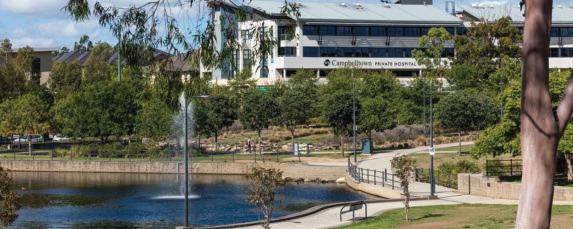
Vaccine hesitancy isn’t just a medical issue – it's a social and political one. Rebuilding trust will require stronger voices, smarter policy, and a collective stand against misinformation. Isabella Angeli weighs in.
Vaccination coverage among children in Australia has declined for
the third consecutive year across all three standard age assessment milestones, according to the latest 2023 data from the National Centre for Immunisation Research and Surveillance:
Aged 12 months – 94.8 per cent in 2020 to 92.8 per cent
Aged 24 months – 92.1 per cent in 2020 to 90.8 per cent
Aged 60 months – 94.8 per cent in 2020 to 93.3 per cent
Sadly, this comes after we saw a steady increase in coverage for eight years before the onset of COVID-19.
Following their meeting in March this year, the World Health Organization’s Strategic Group of Experts on Immunization (SAGE)
warns that global immunisation efforts are at a critical juncture and under threat from various political and societal developments. Monitoring vaccination coverage is essential, but understanding the reasons behind the decline in updates is just as critical.
So, what role do politics and social media play in the declining vaccination rates?
In the United States, we are witnessing the dismantling of public health policy, overseen by President Trump and his Department of Health and Human Services secretary, Senator Robert F. Kennedy Jr.
In January this year, Trump withdrew the US from the WHO, ceasing ongoing funding to an organisation that plays a critical role in vaccinating children in developing countries.
The Centre for Disease Control and Prevention is planning a study into ‘potential’ connections between vaccines and autism. It is unclear where this has stemmed from, but Kennedy Jr’s role includes authority over the CDC.
Meanwhile, Republican lawmakers in New York, Virgina, Connecticut and Mississippi are introducing bills allowing people to waive routine childhood vaccinations. In West Virginia, an executive order now allows claims of religious and moral exemptions to school-mandated vaccinations. Back on home soil, MLC Dr Brian Walker, Perth GP and member of the Legalise Cannabis party, recently shared his views that childhood vaccinations such as the measles, mumps and rubella vaccine be delayed, questioning the link to autism.
Yet, research has debunked any so-called link between childhood



vaccination and autism for over two decades now. Spreading misinformation about vaccines, especially when it comes from political figures, erodes public trust – it is irresponsible and dangerous. In 2025, to see political figures try to capitalise on the anti-vax rhetoric after decades of proving the immense value of safeguarding from vaccination is outrageous and a major risk to the public’s health.
Before vaccines came along, one in three of us would be dead before the age of five. We are so privileged to be so far from this now. But being far removed from this reality has given people a false sense of security. People need to understand that lifelong impairment or death are reallife consequences. We need to guide behaviour and set community expectations.
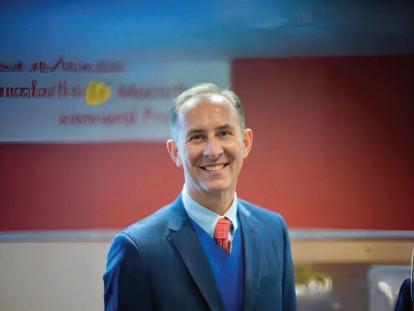
For many, the go-to source for information is now social media platforms like TikTok, or Instagram. This shift is concerning, as more seek medical or health advice from these platforms instead of their general practitioner or other specialists.
Social media has provided individuals a platform to express views or theories about vaccination, leading to confusion and misinformation. Algorithms compound this problem, as users are exposed to content that aligns with their search history or views, further reinforcing the anti-vax narrative.
During the pandemic, we witnessed the amplification of the anti-vax movement online, whether it was placed as mistrust in the gove rnment or public health agencies or the development of vaccines. Mark Zuckerberg, who has a monopoly on the social media landscape through Meta’s platforms, admits that he regrets bowing to pressure from the White House to censor pandemicrelated posts. Now, in 2025, Zuckerberg is driving a freedom of expression agenda, lifting content restrictions and ending third-party fact-checking on Meta’s platforms.
B ack in Australia, a recent article by The Age has revealed that anti-vax parents are sharing tips via social media on how to evade the ‘’no jab, no play’’ policy.
Step-by-step guides and tips on how to forge immunisation records and manipulate loopholes, such as vaccination grace periods, are circulating online. Some even discuss how to edit records using Photoshop. There are now questions about whether the pandemic has further pushed people to oppose vaccination and associated regulation, fuelled by imposed restrictions and theories questioning government and public health agencies.
The impact social media has on behaviour is huge, and the misspreading of information is abhorrent. We need to guide behaviour and set community expectations.
In recognition of declining immunisation rates and growing public uncertainty, AMA Federal Council has made restoring public confidence in immunisation its top priority for 2025.
Vaccine hesitancy is not a new challenge, but some opponents we face in 2025 are. It is essential to recognise the role that both political figures and social media play in shaping public opinion when it comes to vaccine hesitancy. Misinformation undermines public trust in vaccines and jeopardises decades of progress in disease prevention. ‘’Out of sight, out of mind’’ is not a prevention method for disease or a basis for public health policy. We must restore public faith in the profession and vaccination, but it’s clear we must address political and societal challenges to do this.
Isabella Angeli is a policy officer at AMA (NSW).

By Anne Harris
Multiple studies consistently rank Australia’s healthcare system among
the best in the world.
However, as many healthcare professionals can attest to – there is room for improvement. Chronic public hospital underfunding has led to ambulance ramping, packed EDs and long elective surgery waitlists.
The systems we put in place must be fit for purpose to keep pace with the changing needs of our aging society, as well as the medical innovations being developed to tackle some of our biggest health challenges.
Australia’s Pharmaceutical Benefits Scheme (PBS) was created postWorld War II to provide subsidised access to antibiotics – from 1948 to 1960 it evolved to become a more comprehensive program.
Today, the PBS provides subsidised access to more than 5,200 medicines for Australians and has become a cornerstone of Australia’s healthcare system; however, the system we use to approve medicines for subsidy on the PBS has not been comprehensively reviewed in more than 30 years.
Reforms are necessary to ensure doctors can prescribe the medicines Australians need and patients can access innovative new treatments in a timely manner.
On average, there is a 466-day gap for a medicine that has been deemed safe and effective by the Therapeutic Goods Administration to be made available to patients through reimbursement on the PBS.
That is 100 days slower than the OECD average and more than 300 days slower than developed markets like Japan, Germany and the UK.
Pfizer, along with Medicines Australia, is advocating for that gap to be reduced to 60 days.
Patients deserve faster access.
Reduced hospital utilisation
Time is life, but there is a secondary argument to be made – accelerated access to new medicines is linked to reduced days in hospital and consequent productivity gains and positive impacts to the broader economy.
Professor Frank R Lichtenberg, an economist specialising in the impact of technological and pharmaceutical innovation on productivity and longevity, published compelling data that looked at the effect of new medicines on the PBS and hospital utilisation.
He found the increase in medicines added to the PBS between 1994-2011 was associated with a reduction in the number of days spent in hospital in 2019 of 2.48 million. This is valued at an estimated saving to the economy of AU$5.97 billion.
The number of hospital days per 100,000 population is estimated to have declined by 4.3 per cent between 2002 and 2019 as a result of new medicines available through the PBS.
Conclusion
Both sides of government, patient groups, clinicians and the medicines industry have been publicly supportive of reform of Australia’s health technology assessment (HTA) system, used to decide what is reimbursed on the PBS, with shared goals of speeding up access

Australia remains an attractive early launch country.
In September 2024, the Federal Government established an Implementation Advisory Group to respond to the recommendations made by the HTA Review Committee.
By making changes to the policies and methods that affect access to medicines, we can ensure that the system keeps pace with the rapid scientific advancements we are seeing, and that Australia recognises the full value of innovative medicines and is amongst the first countries to access new medicines.
If you are interested in supporting the #StrongerPBS campaign to reduce the time your patients wait to access new treatments, please visit: strongerpbs.com.au.
Anne Harris is the managing director of Pfizer Australia & New Zealand.
This article is written and sponsored by Pfizer Australia.
References available on request from mediaANZ@pfizer.com
As part of our ongoing series following four interns on their journey through their first year, Amanda Davey checks in to see where they are now in their rotations, what they’ve learned and the challenges they are facing.
Emily Lee admits she found the early weeks as a first-term psychiatry intern at Woll-
ongong Hospital overwhelming.
Yet, she remains drawn to the field of psychiatry.
The 26-year-old says the transition from medical student to doctor was “daunting” and a far cry from her days as a student on hospital placements.
While the pressure has ramped up, Emily is revelling in her newfound status on the wards and the professional respect she receives from her patients, most of whom have drug-induced psychoses.
“The patients now see me as an authority figure, which they would not have done when I was a student,” she says. “They even ask me for advice.”
But she concedes she still has much to learn and will continue to do so when she moves on to her subsequent rotations of neurosurgery, followed by medical oncology.
“There is a lot of responsibility and learning, but the supervisors have been very supportive,” she says.
“It is normal for interns to make mistakes – everything is used as a learning opportunity. I think it’s okay to say, I’m a first-term intern, and I don’t know everything.”
More confident than ever
Seven weeks into her general surgery rotation at Lismore Hospital, Sabrina Bilston John
is suffering from information overload. Still, she says she is more confident than ever about her future.
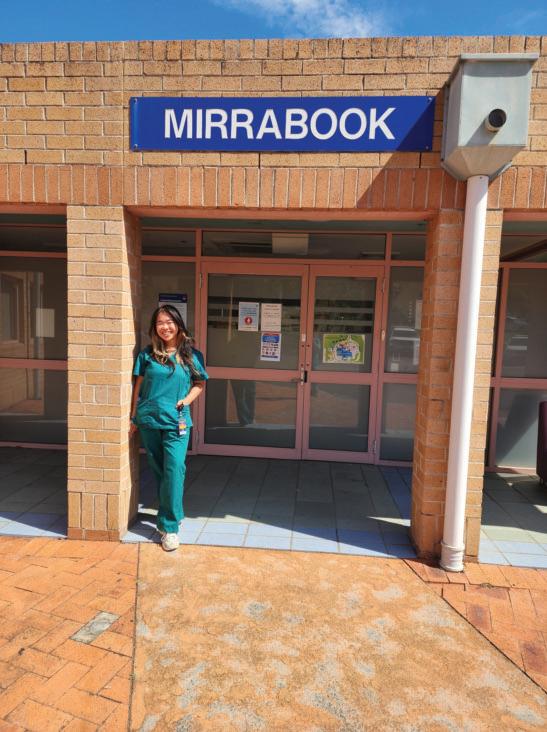
“It’s been a huge learning curvethe most I’ve had to learn in the shortest period of my life. However, I am far more confident in my abilities than I was as a student.
Sabrina explains that a rotation in general surgery comes with the added challenge of the registrars being in surgery much of the time, leaving the interns to manage the wards.
“I think you get a lot of independence very quickly here. When the seniors are operating, we have a lot of one-on-one with the patients and get to know them very well. It’s what I enjoy most.”
But Sabrina says she has no plans to be a surgeon.
At this stage, she is leaning more towards anaesthetics, so she finds the perioperative work involved in this rotation particularly pertinent.
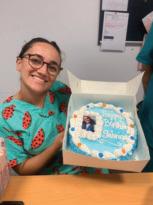
Sabrina believes she is fortunate to be based at Lismore Hospital. because of the support from her supervisors, but she is not doing it alone. Her partner, Byron, is also an intern.
My experience has been overwhelmingly positive, and most interns share the same sentiment. We are very supported here.
“For every mistake I’ve made, and for those I will make, my team believes that everything is a teaching moment."
Pravind Easwaran didn’t expect to enjoy his rotation in the rehabilitation ward
quite as much as he has.
“This area of medicine just wasn’t on my radar,” says the Dubbobased intern.
While the hours are long and the pace is hectic, the 25-year-old has found it a rewarding specialty.
“We help people recover, return to their baseline, and regain their independence. It’s very satisfying. I’ve found it a mix of both generalised and specialised medicine.”
Caring for Parkinson's and stroke, orthopaedic and palliative patients, Pravind’s days are full and varied.
He says he likes his current schedule, which involves working 10 hours a day, four days a week. He also does regular weekend shifts back at the main hospital.
Although he doesn't get much downtime these days, he remains optimistic.
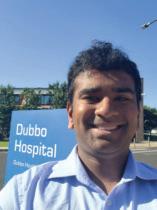
“The terms for general rotations are just long enough to enable us to become good at our jobs, then they rip you away, and you start all over again. It’s hectic, but it’s been going well.”
An unexpected death on her ward during her first week on the job as an intern was
not what Abigail Leeder anticipated on her rheumatology rotation at Royal Prince Alfred Hospital in Camperdown.
While it tested her resilience, she found that discussing this unrelated case with colleagues and senior team members was invaluable.
In her early 30s, Abigail is older than many of her contemporaries, having previously held roles in health policy.
She believes the additional years of life experience have benefited her.
“I have only found it helpful,” she says.
“I am confident in handling the administrative burden that comes with any job, and in a way, I have a greater appreciation of how intellectually stimulating this work is in relation to my previous career.”
As a young mother of a toddler, Abigail and her psychiatric doctorin-training husband, James, are juggling the demands of work and parenthood.
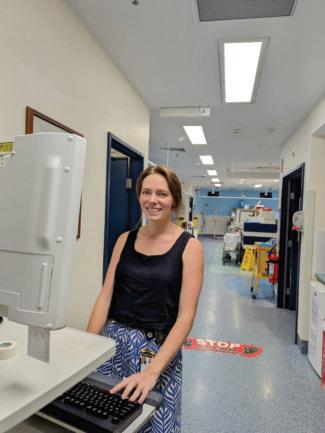
“It was sad, but the clinical team was very supportive of each other, and the reflective process gave the patient all due respect,” she says.
However, as always, it’s onward and upward in medicine, and Abigail is up for the challenge.
Luckily for her, a rotation in rheumatology has proven to be reasonably family friendly.
Abigail has been working regular business hours, starting at 8.30 am and leaving the ward at 5 pm.
However, she knows this relatively easy transition to internship will be short-lived as her next relief rotation will include some long nights.
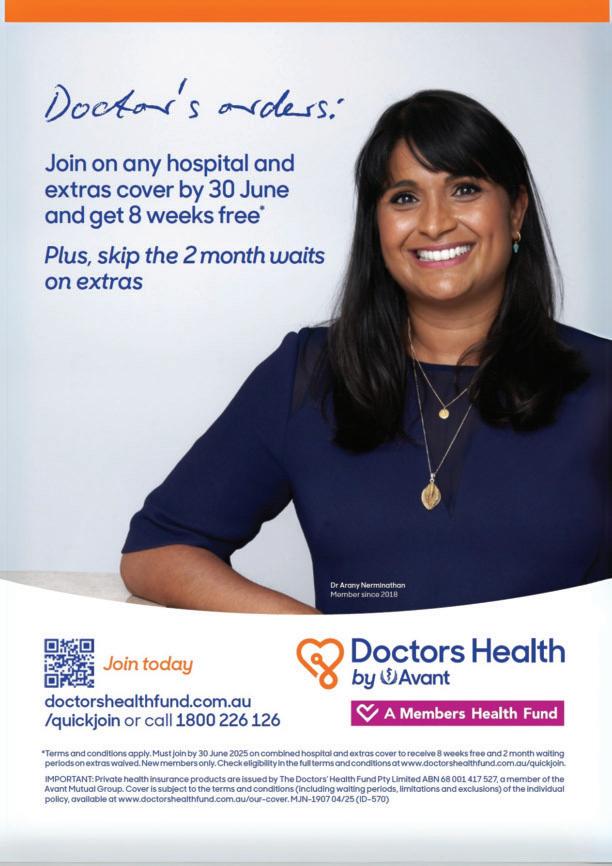
“Human knowledge is never contained in one person, it grows from the relationships we create between each other and the world, and it is never complete.” Paul Kalanithi
Dr Kate Willmot
To be essential is to be necessary. To be irreplaceable is to be unique.
Mortality being one of the few inevitabilities in life, it is easy to argue that doctors are indispensable.
The advent of artificial intelligence encourages us to question this. AI is superior to doctors in some settings in detecting disease, and developers argue that more complex clinical skillsets are on the horizon.
Arguments that AI will not supersede a doctor's moral or ethical proficiency assume these moral frameworks cannot be constructed or regulated in the context of machine learning.
If emotions are, in part, understood as processing visual stimuli in the context of memory, perhaps AI will also eventually empathise.
An argument could be made that AI could replicate behaviours through an appropriate social and professional lens; and perhaps with greater fairness and finesse across cultural and language barriers, fitted to filter out prejudice and bias
Despite this, this proposed future continues to create a sense of disquiet in the community.
Are we simply unfamiliar with such a world? Do we find it professionally threatening? Or is the discomfort a product of a truth that is difficult to articulate?
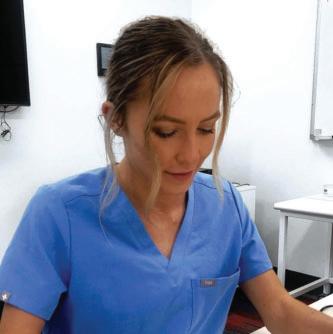
Emergence is the idea that ecologies cannot be entirely understood by dissecting them into smaller units. Equally, these parts may display qualities important to, yet unique to that system. Colloquially, this can be expressed as ‘the whole is greater than the sum of its parts’.
Society generally understands that a doctor is a person who attempts to mend us at our most vulnerable, fearful or weary; and strives to support us when this is no longer possible.
If AI can replicate the mechanics of this, it still fails to live up to this construct in totality.
While patients can rely on accuracy, I believe they have more faith in humanness.
Difficulty verbalizing exactly what this is serves to demonstrate its omnipresence. It is easy to admire colleagues and friends in medicine for their wealth of kindness, resilience, conscientiousness and earnest - and even easier to suggest these are the qualities that make them irreplaceable.
While I do believe it makes them essential; I think what makes doctors irreplaceable is their own selves and lived experiences. Of feeling this lifea machine can only replicate a mirage.
This shared experience and the trust it imbues between patient and doctor is difficult to define and harder to manufacture.
Dr Kate Willmot is an emergency medicine senior resident medical officer at Sydney Local Health District.
AMA (NSW) is committed to helping advance our members in private practice, whether they are established or just starting out. In this edition, Amanda Davey talks to Dr Igor Banzic, a vascular surgeon who has recently taken over a busy private practice in Sydney’s north.
What were the key factors that influenced your decision to take over this private practice?
Three years ago, I was approached by Dr Michael Neale, a very busy vascular surgeon based at North Shore Private Hospital, who was about to retire. We had worked together for two and a half years, so he knew me well. We had the same approach to surgery and patient care. He handed over his database – his patients – and he didn’t ask for anything in return. So, here I am, and I am very grateful.
That sounds busy. What are your working hours?
Yes. This is a very busy practice, so I am booked out from Monday to Friday. I regularly do 14-hour days. I work at five hospitals and run two to three operating lists per week, in addition to consulting two days a week. I have also set up another practice in Sydney’s south. Did you face any unexpected challenges during the setup process of North Shore Vascular? If so, how did you address them?
Nobody prepares you for the administrative work involved. It’s massive, and it can make life difficult. In my case, it wasn’t a slow, gradual start; I was
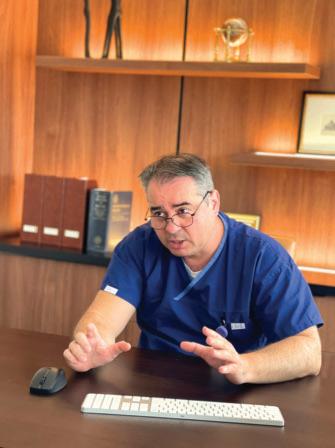
immediately overloaded with thousands of patients, so I had to focus on them, not the paperwork. But it did make my life miserable for a while. I realised I am much more comfortable doing surgery.
Were there any legal or regulatory hurdles that were particularly difficult to navigate? If so, did you seek professional advice?
There were no major hurdles; however, I have a trusted and highly motivated practice manager who handles the day-to-day operations of the clinics.
Una, my practice manager, and I received valuable advice from Michael Neale, who recommended that we join AMA (NSW) for guidance and support. I was reluctant at first because I was trying to reduce all memberships to save money, but he said, “you have to trust me on this and join”. It’s one of the best things I did.
What role did the AMA (NSW) play in helping you establish your practice? What kind of support was provided?
Una contacted AMA (NSW) several
times for guidance, and the team responded rapidly and expertly each time. She describes them as a protective shield that ensures we are legally compliant. Mostly, they helped us with workplace relations support, including employment contracts. I have 10 staff including four vascular sonographers, so the advice has been invaluable. Now I understand why Michael insisted we join.
How do you manage the demands of maintaining worklife balance while running your practice?
It’s not easy. I have two little girls, aged three and seven, so I make sure I'm around on weekends. Aside from my family, I have three passions: flying, travelling, and motorbike riding. I fly single-engine planes, I have travelled to almost all 193 UN countries, and last December, I made an 18,000km solo motorbike trip circumnavigating Australia.
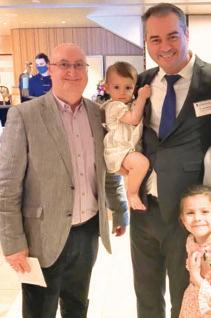
The way I see it, I am 46 years old and probably at the peak of my career. I can maintain this lifestyle and work hard without slowing down until I'm at least 55-plus.
What will you do after that time?
One day, I hope to have a young consultant take over and run my practice, just as I did for Michael.

I won’t be selling the business. It will literally be a handover to somebody who is a good match and who I know will look after my patients.
What advice would you offer to doctors considering opening their private practice?
Start slowly and gradually build up the practice. Work hard but balance your lifestyle.
Looking back, is there anything you would have done differently?
I would worry less. I think I spent the first two years stressing about running my business, even though all the performance parameters were excellent. I was not under stress in theatre because I knew my stuff, but in setting up the business, I didn’t know what to expect.
What makes you proud?
I have one of the busiest vascular labs in Sydney, and I bulk-bill for ultrasound scans. I would earn more if I charged, but I earn enough, and bulk-billing makes me feel good; I can go home and sleep well. I want to play fair. That’s how I set up my business. I am proud of it.


The death of a doctor—especially by suicide—reverberates through the medical community in profound and lasting ways.
By Dr Kathryn Hutt
when a doctor dies particularly by suicide, it’s often an
enormous shock.
It affects us deeply, often in ways that aren’t visible to others, and in ways we may not expect ourselves. The news hits hard, even if we didn’t know the doctor personally. The tragic death of a colleague one of our professional family has both an immediate and lasting impact.
For most of us, it also stirs painful memories of others we’ve lost. We carry those names quietly throughout our careers, and the grief accumulates.
In these moments, what happens next matters. It’s a difficult time for everyone, and often people don’t know what to do.
When a Doctor Dies is a new resource developed by Doctors' Health NSW after AMA (NSW)
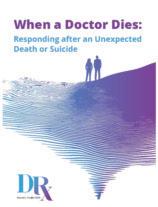


Talking about suicide is difficult but necessary. Silence and stigma can do real harm - particularly in our profession, where shame and self-blame are all too familiar.
Clear, respectful communication and a response that is timely, thoughtful, and compassionate can help prevent further harm and make it easier for grieving doctors to seek support without feeling weak, judged, or as though they’ve failed.
This guide is designed to help managers respond with care and confidence, even in complex and confronting situations. It offers a practical structure for hospitals to follow, helping avoid the confusion, disconnection, or procedural coldness that can deepen distress.
Most of all, it’s a way to show that doctors matter. That the loss of a precious life is not met with silence or inadequate gestures. That their colleagues are seen, heard, and supported - and feel connected to a workplace that cares.
We hope this guide is rarely needed, but when it is, we all need to be ready.
Dr Kathryn Hutt is the Medical Director at Doctors’ Health NSW.
The Doctors’ Health NSW 24/7 phone line (02) 9437 6552 is here to support all doctors and medical students to prioritise their own health. Whether you need advice on finding the right GP or simply someone to talk to, calling Doctors’ Health NSW can be a first step towards better self-care.
For nearly 130 years, the Medical Benevolent Association of NSWACT (MBA) has been a
vital safety net for doctors and their families in times of crisis. Established in 1896, it initially provided financial support to members only but has since expanded to assist all doctors— practising, retired, or non-practising— as well as final-year medical students and families of deceased doctors across NSW and the ACT.
Beyond financial assistance, MBA now offers social work services, financial counselling, career planning, and educational workshops on doctors' health and wellbeing. These services are more critical than ever as demand continues to rise.
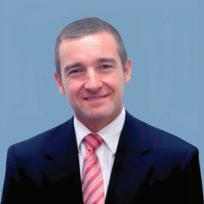
Dr Andrew Wines
MBA president Dr Andrew Wines acknowledges that funding requests are becoming harder to meet.
“The average support gift has increased by 73.1 per cent over five years,” he explains.
Although donations have grown, they haven’t kept pace at that rate. Many of MBA’s loyal supporters have retired, reducing their ability to contribute. Historically, MBA has fulfilled 67 per cent of financial requests, but Dr Wines fears this may decline unless more doctors step in to help.
With MBA’s annual appeal launching this month, Dr Wines is making a personal call to mid-career doctors:
He says doctors in crisis often say knowing their colleagues' care makes all the difference in their recovery. Help us fill the gap and show struggling colleagues they are valued.
MBA recently introduced a No or Low Gap Register, spearheaded by Associate Professor Antonio Di Dio for those preferring other ways to contribute. This initiative connects doctors in medical need with compassionate colleagues willing to provide medical services with little or no out-of-pocket cost over the Medicare rebate.
The idea was born from an MBA Council meeting where difficult decisions had to be made on distributing their limited funds among doctors in severe hardship. Cases included a junior doctor and her children fleeing a violent partner, a father with stage 4 cancer, a young woman battling aggressive breast cancer, and an older, chronically ill specialist unable to work.
Recognising the financial burden of medical expenses and MBA’s limited ability to help cover such fees,
Associate Professor Di Dio contacted 40 ACT colleagues over 24 hours, asking them to participate. Every single doctor said yes.
MBA aims to expand the register to NSW, hoping to recruit a few hundred doctors. With enough participants, each doctor shouldn’t need to see more than one or two struggling colleagues annually.
The register remains confidential, ensuring privacy for both patients and providers.
Supporting colleagues through a donation or the No or Low Gap Register is a powerful way to show doctors value each other. In its 130th year, MBA continues to stand by those in need—but it relies the generosity of the medical community to continue its mission.
Please use the QR code to donate to their appeal. If you are interested in joining the No or Low Gap Register, email MBA’s executive officer. louise.fallon@mbansw.org.au with your contact details and any questions you have.
Now is the time to step up and ensure that no doctor is left behind.

Australia’s rural communities are crying out for more doctors — and the opportunities have never been more appealing.
By Theo Clark
Contrary to popular global opinion, Australians are predominantly urban dwellers, with the vast majority of our 27 million inhabitants living in cities along the coast. Yet, when it comes to the economic lifeblood of the nation, the situation is reversed, with inland primary industries producing the lion’s share of export income.
The health and wellbeing of remote, rural, and regional communities are, therefore, fundamental to Australia’s prosperity and long-term future. However, despite Australia ranking highly in global terms for physicians per capita, the national distribution pattern for doctors reflects our general preference for urban existence.
In other words, the bush needs more doctors.
But that is not the end of the story. Just as in hi-tech modern farming, a farmer might have all the knowledge of soils and seasons to sow a field but can’t succeed without the right technologies and workforce to plant, harvest and transport a crop -so a country doctor’s practice relies on an interdependent web of clinical, financial, technological and social supports to provide successful health outcomes for the community.
From 2021, with funding from the Australian Government, RDN coordinated trials of the Collaborative Care Program, which addresses challenges in accessing primary care services and the recruit-ment and retention of health practitioners.
This program runs across five regions in rural NSW and now receives funding from the NSW Ministry of Health. It continues to work with communities in need to develop tools and support to solve complex health challenges.
Network, Collaborative Care has been able to coordinate a generous support package to help a GP relocate to the town to join an existing practice or start their own.
The support package includes a $25,000 relocation payment, six months of free rent of the premises, and six months of support from a welcome ambassador to help them settle in.

The picturesque township of Quirindi.
Quirindi wants a GP
Project managing the search is RDN’s Michelle Hudson. “There is an established patient base of approximately 1,000 active patients from a previous practice and as an MM5 location, generous bulk-billing incentives are available,” Michelle says.
Addressing the rural doctor shortage
Over 36 years, Rural Doctors Network (RDN) has championed the importance of access to health care for all and developed a holistic approach to supporting health professionals within such frameworks of collaboration.
One current focus is the picturesque township of Quirindi, situated in prime agricultural land on the Liverpool Plains of northwestern New South Wales. Four hours from Sydney and less than an hour from the regional hub of Tamworth, the district is known for its natural beauty and fertile soils. But for all its brilliant lifestyle potential, Quirindi has a shortage of doctors.
With the support of local partners, including Liverpool Plains Shire Council, Hunter New England and Central Coast Primary Health
“Quirindi is known for its beautiful rural aspect, friendly atmosphere, and relaxed country lifestyle. With excellent schools, including private and boarding options in Tamworth, just 65 km away, the town offers a family-friendly environment for professionals relocating to the area.”
Country NSW is full of such opportunities for doctors looking to relocate to new pastures. If you would like further information on how to take your medical career to the bush, contact the RDN recruitment team via recruit@nswrdn.com.au
Theo Clark is the communications manager at Rural Doctors' Network.


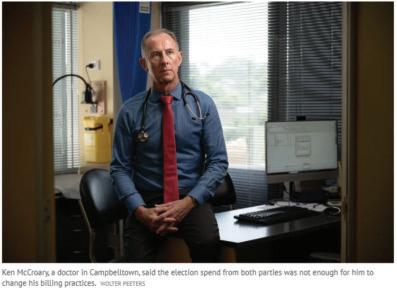
Despite the pledged $8.5 billion boost to bulk billing, Dr Ken McCroary said, “For me to keep my doors open, I still don’t have any choice but to bill privately.”
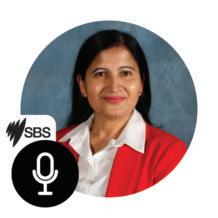
Bulk-billing update
Dr Anju Aggarwal: SBS 28 FEB
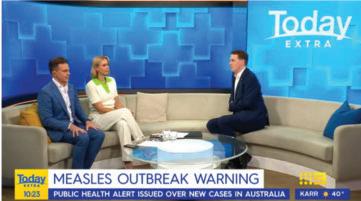


Dr Michael Bonning: Today Extra 27 MAR
Former AMA President Dr Steve Robson explores the breakdown of trust within the doctor and patient relationship due to a rise in social media advice.
Dr Steve Robson: The Australian 8 APR

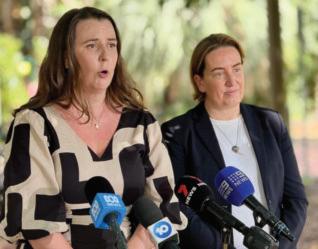



The AMA Public Hospital Report Card showed some modest improvements, but performance remains worse than five years ago. AMA president Dr Danielle McMullen and AMA (NSW) president Dr Kathryn Austin said systemic issues were significantly impacting doctors.
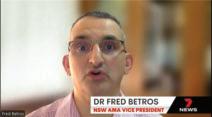
“The problem is our emergency workload will often overwhelm our ability to do the elective workload, and that’s where the resources really need to come into play.”
Dr Fred Betros: 7 News 19 MAR

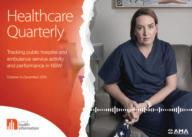
Dr Kathryn Austin: SMH, 2SM: 19 MAR
“We don’t have enough beds to do our elective operations because we’re too full with emergency department cases.”
Dr Fred Betros: The Daily Telegraph. 1 APR
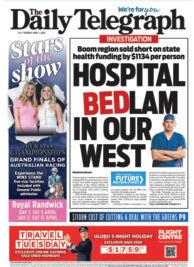
“We don’t have enough beds to do our elective operations because we’re too full with emergency department cases.”
“This the worst [flu] season we’ve seen in the Northern hemisphere in 15 years.”

Dr Michael Bonning: Today Extra 7 APR

This year, AMA proudly took to the streets for our first appearance in the Sydney Gay and Lesbian Mardi Gras parade, championing inclusive healthcare for all. Staff from across the country came together in a vibrant display of unity, marching to support our LGBTQIA+ colleagues, patients, and a health system where everyone feels safe, respected, and valued.

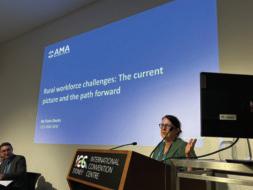

The last Saturday in March was a dynamic day for the AMA (NSW) team, with key events driving professional development and healthcare advocacy.
In North Sydney, our Starting Private Practice Masterclass provided invaluable guidance to doctors embarking on their private practice journey. Our Workplace Relations team and a panel of experts shared insights on legal considerations, medical billing, marketing strategies, and tax management, ensuring attendees were equipped for success.
Meanwhile, at Darling Harbour, AMA (NSW) was proud to participate in the Australian Society of Otolaryngology, Head and Neck Surgery’s Annual Scientific Meeting. CEO Fiona Davies took the stage to address critical regional and rural workforce challenges, reinforcing our commitment to healthcare equity across Australia.
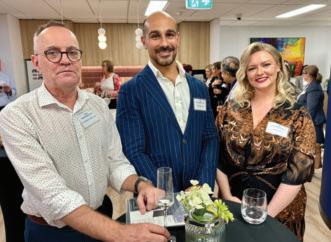
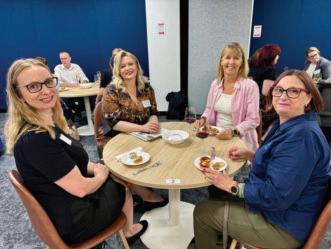
Harnessing the power of journalists and politicians to effect positive change is vital in health.
More than 40 practice managers attended the launch of the Practice Managers’ Network in April, a dedicated space for connecting, collaborating, and sharing industry insights.
This free event, open to AMA (NSW) members' practice managers, featured a mix of speed networking and relaxed interactions, allowing practice managers to meet our Workplace Relations and Membership teams, engage with industry partners, and exchange best practices with their peers.
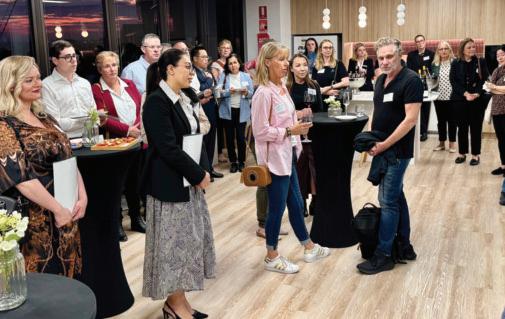
Thanks to the former NSW Minister for Health and Minister for Medical Research, the Hon Jillian Skinner, and The Sydney Morning Herald’s state political editor, Alexandra Smith, for featuring at our recent pulse event, facilitated by AMA (NSW) President Dr Kathryn Austin and kindly hosted by our partners, HWL Ebsworth Lawyers.
Jillian and Alex generously shared their extensive knowledge and expertise with attendees on navigating the media and political landscapes, providing valuable tips on getting your message heard.
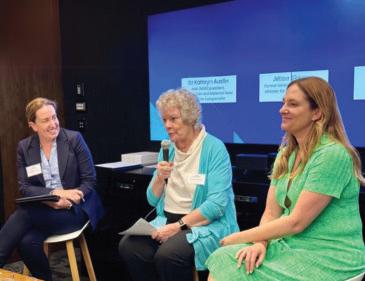
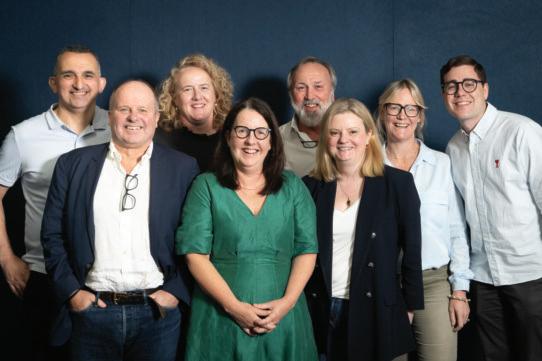
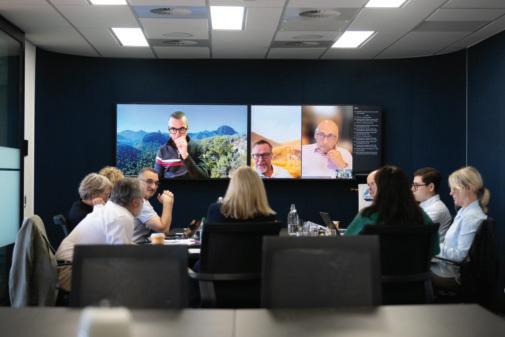
Created by Ashna Basu


Dr Ashna Basu is a psychiatry registrar working in Sydney. She is chair of the Young branch of the Medical Women's International Association, president of the Medical Women's Society of NSW, NSW representative on the RANZCP Binational Committee of Trainees, and a member representative of AMA (NSW) DITC.
1.
Cavity whose innervation comes primarily from the maxillary and mandibular divisions of the trigeminal nerve (4)
4.
Area of the brain damaged in anomic aphasia (7, 5; 4 across, 5 down)
Area of the brain that controls fine-tuned body movement (15) 8. Cranial nerve ---; abducens (3) 9.
10.
Type of cell that provides physical and chemical support to neurons and maintain their environment (5)
11.
Variant of the sequence of nucleotides at a particlar location on a DNA molecule (6)
13.
Location at which the spinal cord passes into the cranial cavity (7, 6; 13 across and 17 down)
16.
Area of the brain in which olfactory hallucinations arise; also known as the primary olfactory cortex (5)
19.
Cognitive impairment suggested by reduced D2 receptor density on a DAT scan abbreviation (3)
20.
Anatomical location from which tics are thought to emerge (7, 7; 20 across and 12 down)
22.
25.
Brain region linked to Parkinson’s Disease (15)
Insulating layer that forms around nerves, made up of protein and fatty substances (6)
2.
3.
Location where serotonin is synthesised (5, 7; 2 down, 12 down)
Gyrus involved in dreaming and word recognition (7)
4.
5.
6.
Nucleus ---; site of GABA synthesis (9)
See 4 across (5)
American Professor of Neuroscience who discovered a technique of cotransformation via transfection (4)
7.
Fasciculus in the dorsal posterior column carrying information from the upper half of the body (7)
10.
Plural of 5 down (4)
See 20 across or 2 down (7) 12.
14.
Imaging modality using magnetic fields and radio waves to generate signals from the body(abbreviation)(3)
15.
One of three types of ionotropic glutamate receptors alongside AMPA and Kainate (abbreviation) (4)
See 13 across (6) 17. Inhibitory neurotransmitter (abbreviation) (4) 18.
21.
British psychiatrist associated with research into the biological basis of schizophrenia (4)
23.
Abnormal deposition of this protein seen in Alzheimer's, Frontotemporal Dementia, Progressive Supranuclear Palsy and Corticobasilar Degeneration (3)
24.
Atom or molecule with a net electrical charge (3)
Find the answers on page 43





































